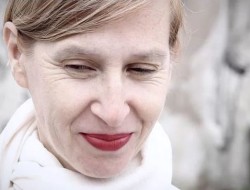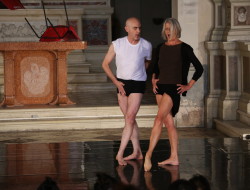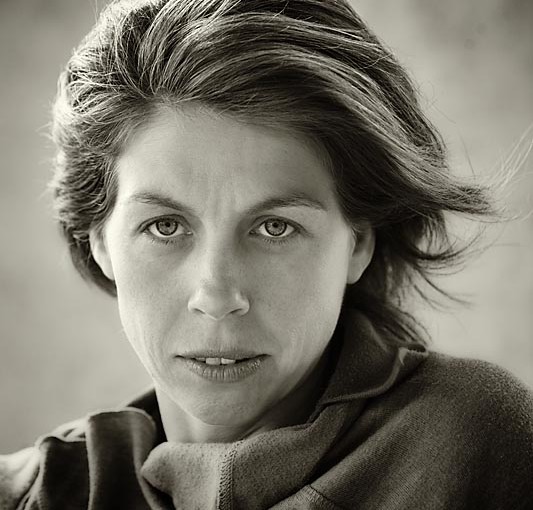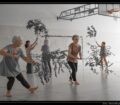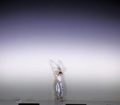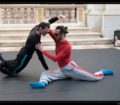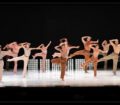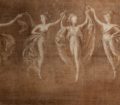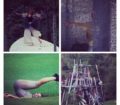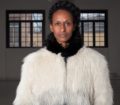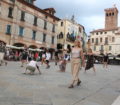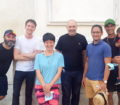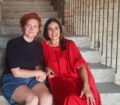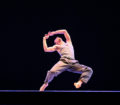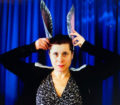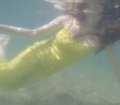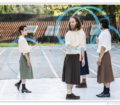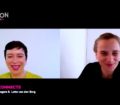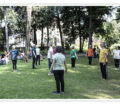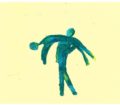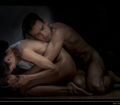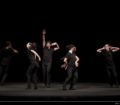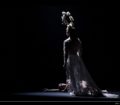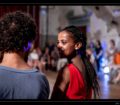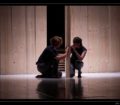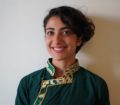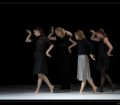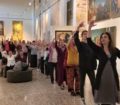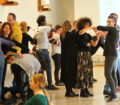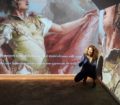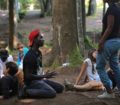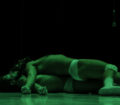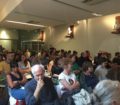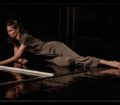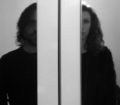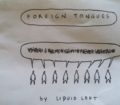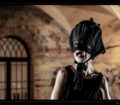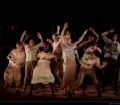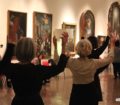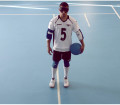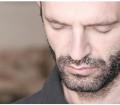Developing and framing herself: an interview to Liat Waysbort
Liat Waysbort (Israel 1974), after dancing with the Bat-Sheva Dance Company for nine years, completed her studies in the Netherlands, at the master choreography program of Codarts (Rotterdam). In 2005 she had started her creative work in Dansateliers, and continued with her very successful choreographic trajectories since then. At BMotion 2014 she presents Please me Please, a solo performed by Ivan Ugrin.
As a dancer you had been working for almost 10 years at Bat-Sheva Dance Company; then you went to the Netherlands to develop as a choreographer. Which was the turning point?
At Bat-Sheva I was lucky enough to experience and taste a lot of different works because at that time the company still invited a lot of choreographers such as Forsythe, Vandekeybus or Amanda Miller, even though I had a great affinity with Ohad’s work.
But I really like freedom, creating my own frames, rechallenging myself. I needed to advance and in the company there was no place for me to advance as the relation that I had with Ohad was very capturing. Moreover I like to keep growing and I was missing some intellectual information, more knowledge, more history, how things evolve.
So I moved to the Netherlands. I was invited as a dancer first, then I had a short freelance career, and thereafter I decided to attend choreography studies at Codarts in Rotterdam. I enjoyed the way they did it and how it was developing, so I decided to stay. But there is still a connection with where I come from, it’s not something hidden or I run away from.
 So you started with Ohad Naharin and then you had this need for academic development. How have you used the new information you got?
So you started with Ohad Naharin and then you had this need for academic development. How have you used the new information you got?
I wanted to become a maker for many years. Ohad works with a dominant and obvious way for my understanding and my body, and I needed to recreate the creative framework in which I’m working in.
I didn’t want to become a dancer-maker. I wanted to become a maker, a choreographer, someone who stands outside and knows how to direct people to the ideas that I want. The work needs to be able to exist not only in my sight and in my body, but it needs also to be explained to other people. This would make me develop as a maker, and this is the kind of maker I want to become.
As a dancer I fulfilled everything I wanted to. A choreographer needs to have the craftsmanship to be able to communicate; and in that sense learning works of other people, learning skills, experimenting, having real learning classes with people working many different methodologies and strategies, and learning learning, learning even how to film dance how to look at dance from different perspectives intrigues me to develop a language.
We are going to see one of your works during BMotion, Please me Please. Have you worked more on the concept of movement or have you started from a specific theme?
There is a very clear theme. Most of my works are originated from a specific idea or concept. In this case it examines the idea of pleasing, how dance as an art form is involved in pleasing an audience, a maker or a performer, and how this influences or doesn’t influence the decisions we make.
 How did you choose Ivan Ugrin for your performance?
How did you choose Ivan Ugrin for your performance?
Ivan was a student of mine. He is someone who is very young in his dance education but he is very open and intelligent. I find it appealing that he did medical studies before he started to dance. His informative world is very big, and I find it always challenging. I think he understands the core of my vocabulary, so he can execute very precisely the ideas we are talking about, and this tempts me to keep working with him.
Besides Ohad, who is the choreographer who has influenced you the most?
Paul Selwyn Norton. I worked with him as a dancer and as assistant for 12 years… I’m a long-term relationship girl!
Looking at the future, which aspects are you willing to learn, examine or discover?
I think that the situation today in the dance world – or I should say in the art world – is a lot about verticality, so I was forced to put a lot of attention on it. Actually what I’m trying to create is a framework into which I can keep exploring and extending my work. To get enough subsidiaries and facilities not only to produce but to keep developing, discovering and experimenting with the knowledge I have.
How do different countries react to your work?
I find very different reactions. In the Netherlands people are not so passionate. There are reactions and there is a great support, but it will usually be rational – what do you need, how do you need – and it’s a bit more judgemental in that sense – good/bad big/small.
In places like Israel I find there is a lot of echo to dance because it’s very physical and passionate, alive and dynamic, so in that sense maybe there is more flow of reaction.
In Italy, for example, I find some sort of similarities with the Israeli audience, but also something from the more European status of treating dance. But in general there is a big reaction to dance, and this is something that not a lot of people are willing to accept or to see.
I absolutely don’t agree with the assumption that dance has no audience that not enough people are interested in it. I think you have to offer the right things, that you can educate the audience tempting it, that most people will be touched by dance in different ways.
Interview to Liat Waysbort
Bassano BMotion – August 24, 2014
Read more:
Liat Waysbort | PORTRAIT
Liat Waysbort | WORKSHOP
Tags: bmotion2014, operaestate

